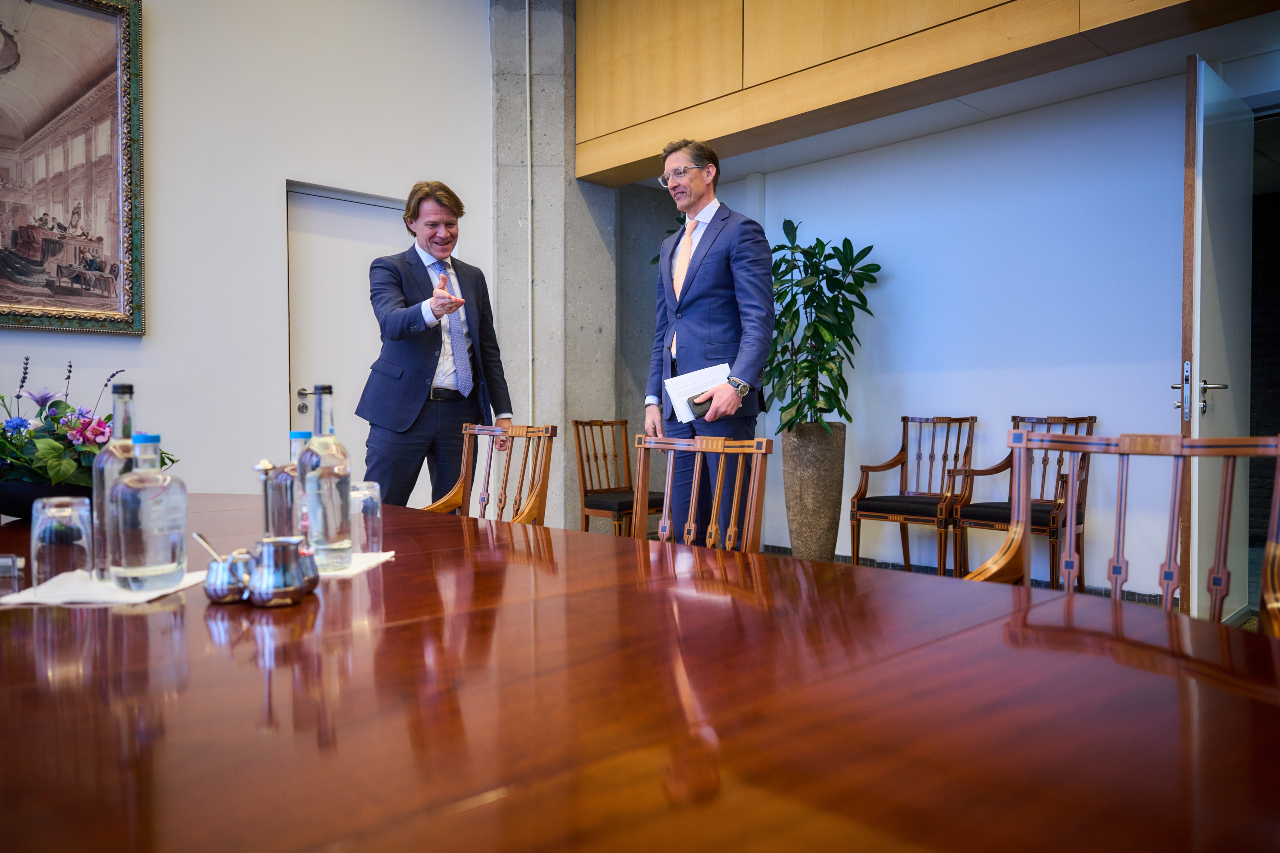Most parties want a majority cabinet, but not the key players
Gordon Darroch
Coalition talks leader Kim Putters has admitted he faces a difficult task in trying to put together a working government after taking soundings from 13 of the 15 parties in parliament.
Putters said he would have a “very good think” before deciding how to proceed, with just over two weeks to go before he is due to present his findings to MPs.
Most of the minor party leaders Putters met on Tuesday said they saw a majority cabinet of PVV, VVD, NSC and BBB as the most logical option, even after talks between the four right-wing parties ran aground two weeks ago.
“I will hold follow-up talks in various combinations, but first I’m going to have a very good think,” Putters said after concluding his canvassing on Tuesday.
Geert Wilders’s PVV, the largest of the four parties with 37 seats, and the BBB, the smallest with seven, are in favour of an orthodox coalition.
But the liberal VVD party and newcomer NSC both prefer an “extra-parliamentary” cabinet. Ministers would not be bound by party discipline in the same way as a regular coalition and would have to seek support for their legislative programme on an item-by-item basis.
‘Looser relationship’
NSC leader Pieter Omtzigt, who has been the strongest advocate of a non-standard formation, withdrew from the last round of talks a week early and has said he will not join a second round of negotiations with PVV, VVD and BBB.
He is willing to support a minority coalition of the other three, but VVD leader Dilan Yesilgöz has said her party will only join the cabinet if NSC is included.
Omtzigt cited the childcare benefits scandal, the subject of a scathing report on Monday into the punitive anti-fraud regime that drove thousands of families into debt and depression, as an example of the shortcomings of the current system.
“A looser relationship between government and parliament is desirable,” Omtzigt said. “You could see that in the parliamentary inquiry: MPs from coalition parties couldn’t do anything to change bad laws.”
Caroline van der Plas, leader of the BBB, said she would prefer NSC and VVD to take part in a regular coalition. “If you can support a minority coalition, you can sit in a cabinet as well.”
Stable majority
Most minor party leaders said a “stable” majority cabinet was their preferred option and urged Putters to break the deadlock quickly.
D66 leader Rob Jetten said it was “sensible” to give the four right-wing parties another try, while Volt’s Laurens Dassen favoured a centrist combination including the left-wing alliance GroenLinks-PvdA, without the PVV.
Joost Eerdmans, the only MP for the hard-right JA21, secured a majority of votes in parliament for a motion calling for the talks to focus on a “centre-right cabinet” with PVV ministers, but the vote is not binding on the parties.
Frans Timmermans, leader of GroenLinks-PvdA, has also said the four right-wing parties should try again to form an orthodox coalition. “I think it’s sensible to form a majority cabinet,” he said. “The problems are very large.”
Timmermans said he was not waiting in the wings to lead an alternative coalition, even though his party could theoretically form a majority with VVD, NSC and D66. “We can only think about other routes if the initial formation phase arrives at the conclusion that this route cannot lead to a cabinet,” he wrote in a letter to Putters.
Thank you for donating to DutchNews.nl.
We could not provide the Dutch News service, and keep it free of charge, without the generous support of our readers. Your donations allow us to report on issues you tell us matter, and provide you with a summary of the most important Dutch news each day.
Make a donation